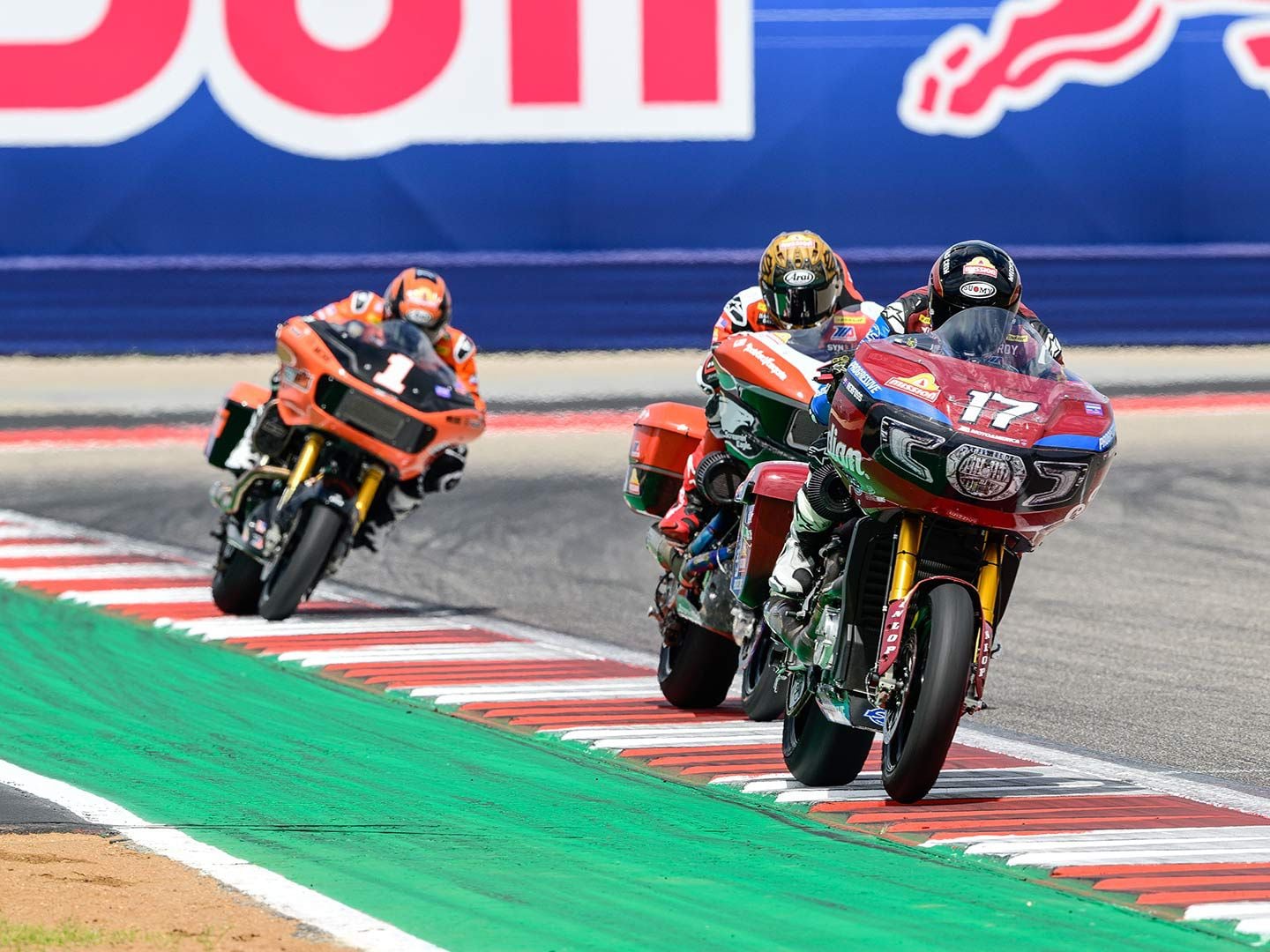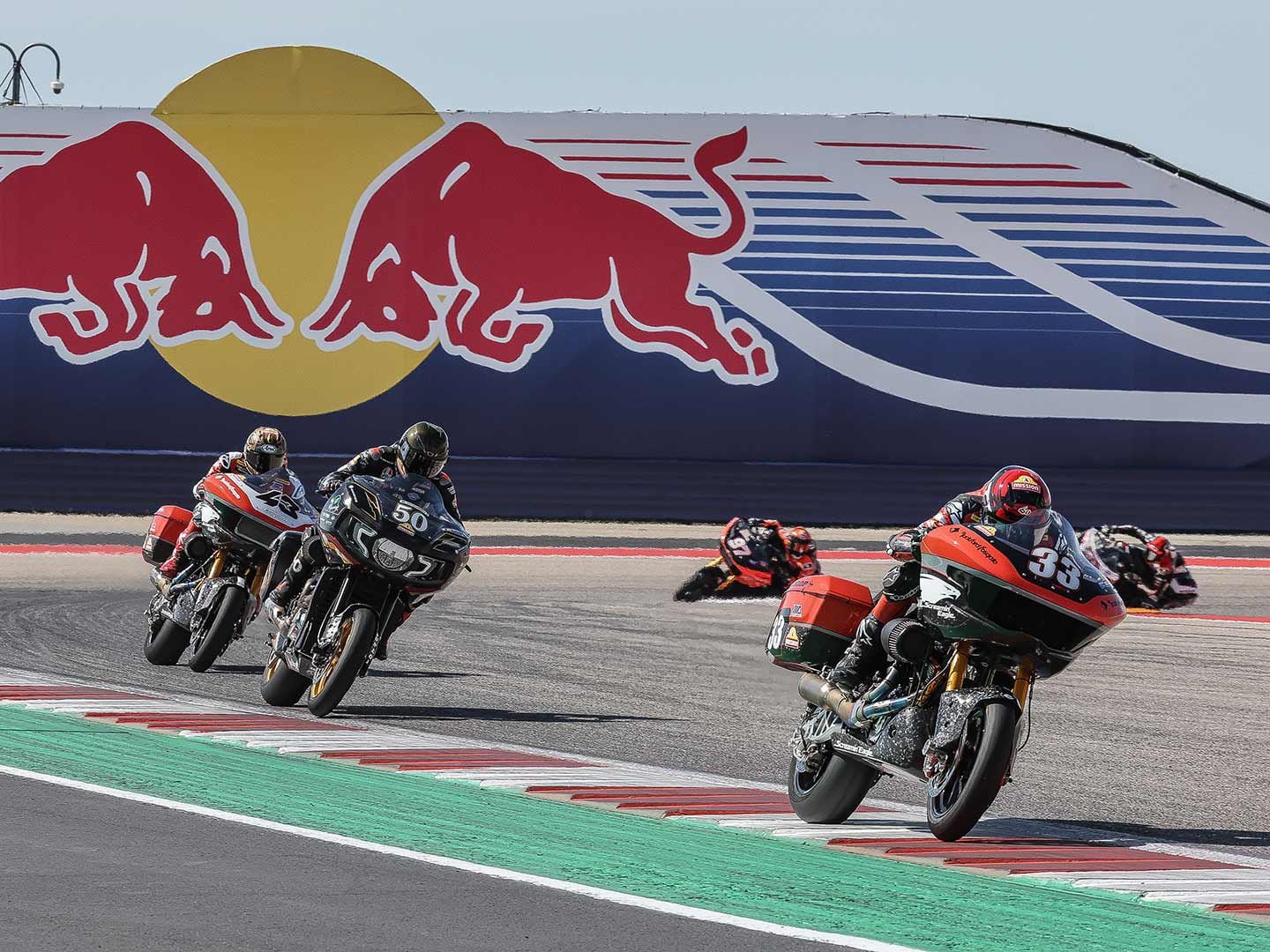
Baggers are becoming more and more competitive. Lap times continue their decline. Therein lies the possible contradiction. Fans love the wild incongruity of the class: “touring” at 170 mph and lapping at truly impressive speeds. They love the rawness of the bikes—no electronics, weaving and wiggling as the men riding them visibly work very hard to keep them gathered up, despite big slides and slip-wiggles.
Contradiction: The teams are here in order to prove which brand and team is the best. To accomplish this, engineers must prevent bad bike manners distracting riders from their task of winning. It is possible that as these bikes improve and become faster and smoother, they could lose their appeal.
Never mind; that’s not a problem yet. Indian has introduced a new swingarm as well as narrowed their forward engine hangers, to prevent accidents caused by digging the edges into the asphalt. It means being able to lean at higher angles without either: (a) disaster or (b) having the bike raised so high that the riders have to use 4-inch lifts on their boots to prevent falling over the start grid.
CW Editor-in-Chief Mark Hoyer and I recently had a Zoom meeting with Dunlop engineer John Robinson, who revealed that the tires being used in the Baggers class are normal Superbike slicks—not something unique to the application.
The cost of making tires that can carry bikes weighing 620 pounds is significant. Even though Baggers races tend to be short, like early AMA Superbikes, you will see riders running wide during the second half of these races.
That made it fascinating to watch Troy Herfoss in Race 1 at COTA, getting away from the start in lowly sixth, then moving up as the leaders’ tires began to look weak on their edges, leading to running wide. Herfoss was able to win the race and I immediately thought of Marco Lucchinelli’s tire strategy that helped him win the 500 championship back in 1981. He rode a moderate pace, behind the leaders. When the leaders’ tires looked nicely toasted, he eased past them all, having conserved his own rubber.
But then in Race 2 Herfoss’s combination just wasn’t fast enough. Kyle Wyman, riding a Harley-Davidson motorcycle, led him to the finish line by 0.6 seconds. He completed a lap of 2:14.890.

It’s exciting to see the old Indian-versus Harley rivalry rekindled, and that these two manufacturers are the only ones in the series. It reminds me of 1978 when one of the first AMA Superbike teams, unhappy with their handling, tried to blame Goodyear. Following its motto “Protect Our Good Name,” Goodyear instrumented a showroom example of the complainant’s chassis with multiple strain gauges, and then, using an on-board data system, was able to make a movie of just how much that chassis was flexing—and exactly where (“We have no further questions, your honor”).
This revelation can be traced back to the generation 2 AMA superbikes, as well as the industry-wide adoption of mass-produced rigs. (Erik Buell was the first). Two or more people can be a group. of them) to Honda’s 1984 NSR500 experiment with putting the fuel under the engine. When someone shows us the way, we can all benefit.
These bikes are quite satisfactory in their intended use as tourers. Their sales confirm this. Why make modifications based on race experience as these companies do?
When you put a production bike in racing, you’ll get a flood of new information. The manufacturers are able to learn a lot of information very quickly. They could not learn it any other way. Bravo.
The baggers on COTA during the US MotoGP last weekend were as exciting to the GP paddock as the AMA dirt track at the Indianapolis Mile was in 2009.

